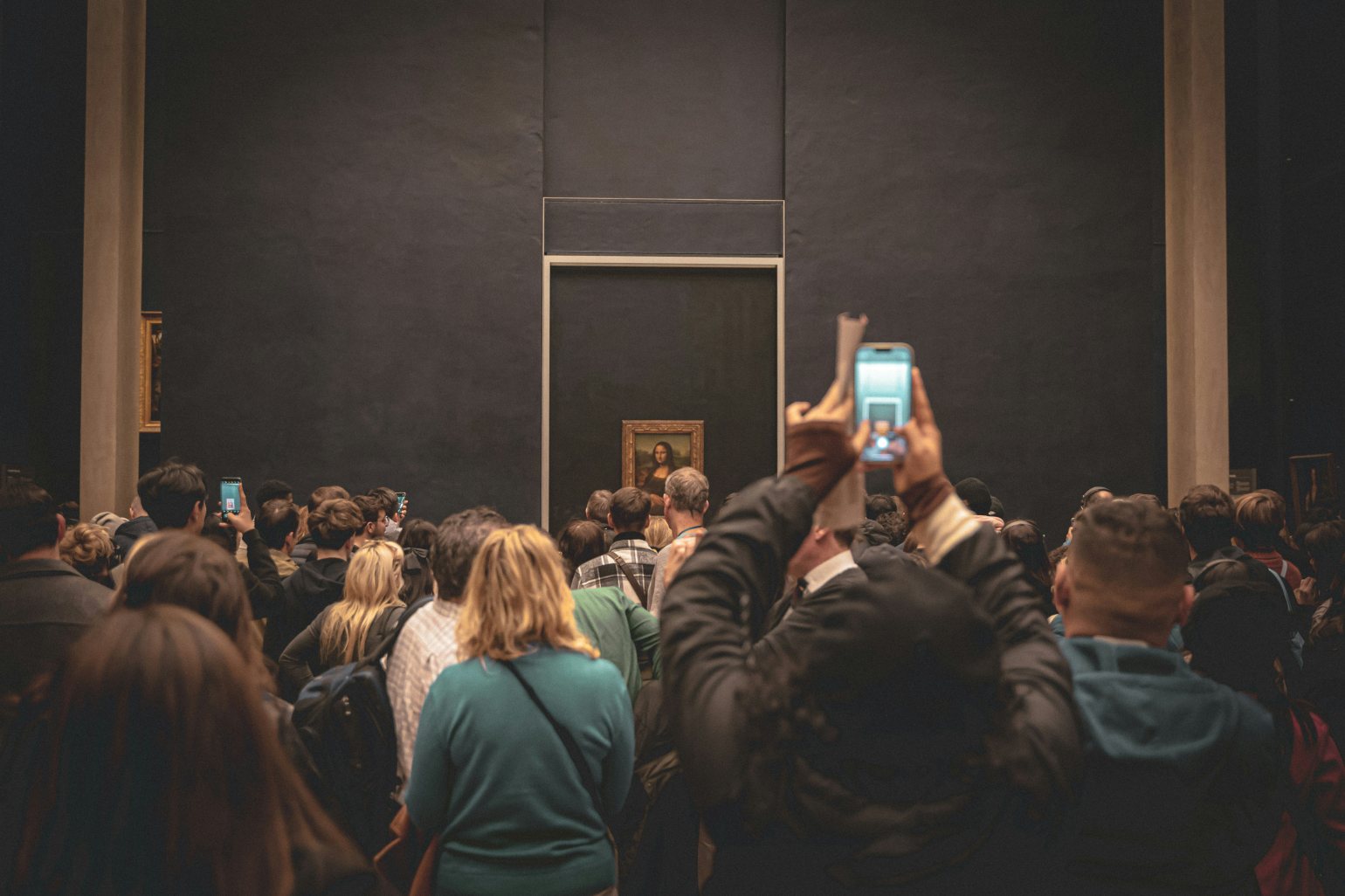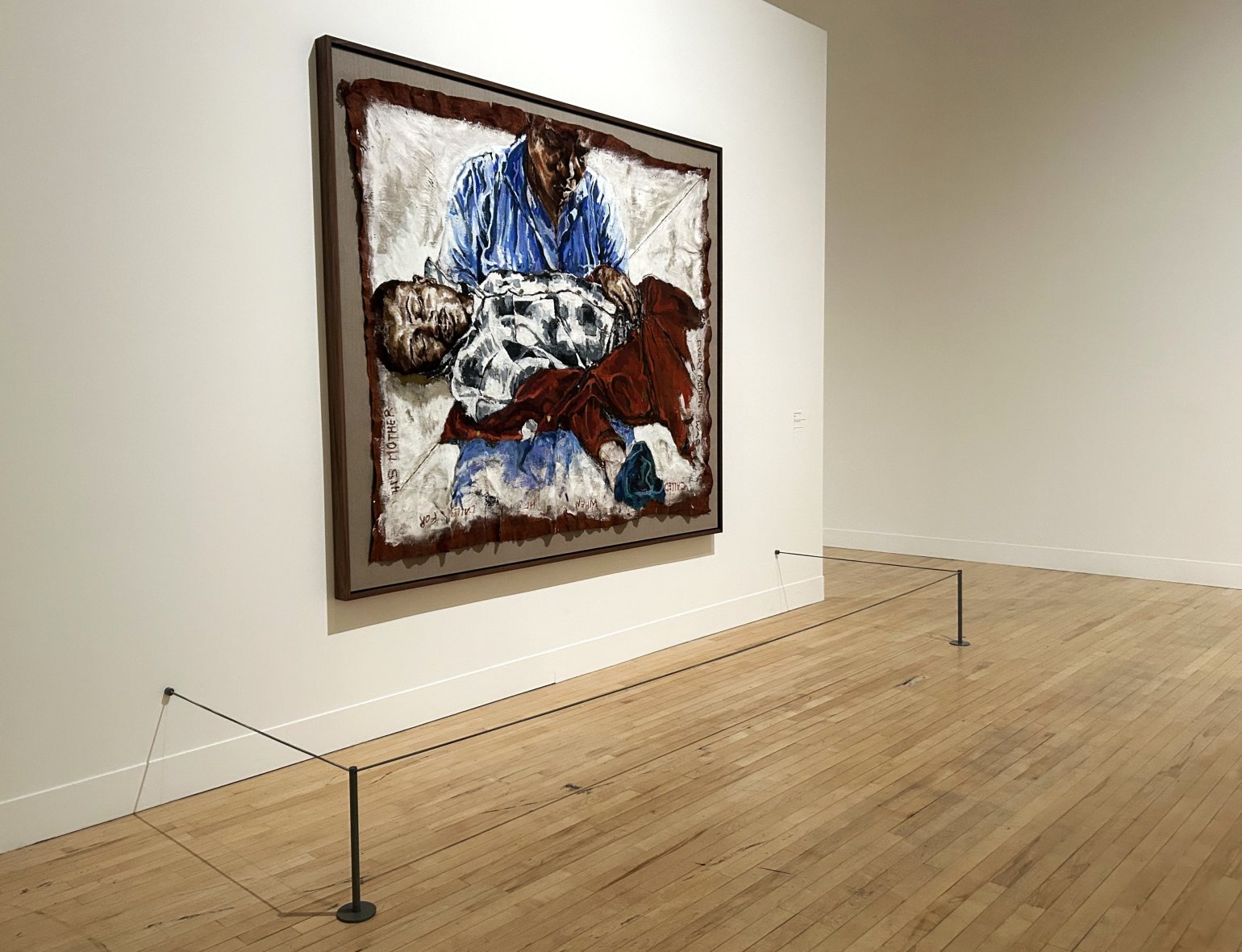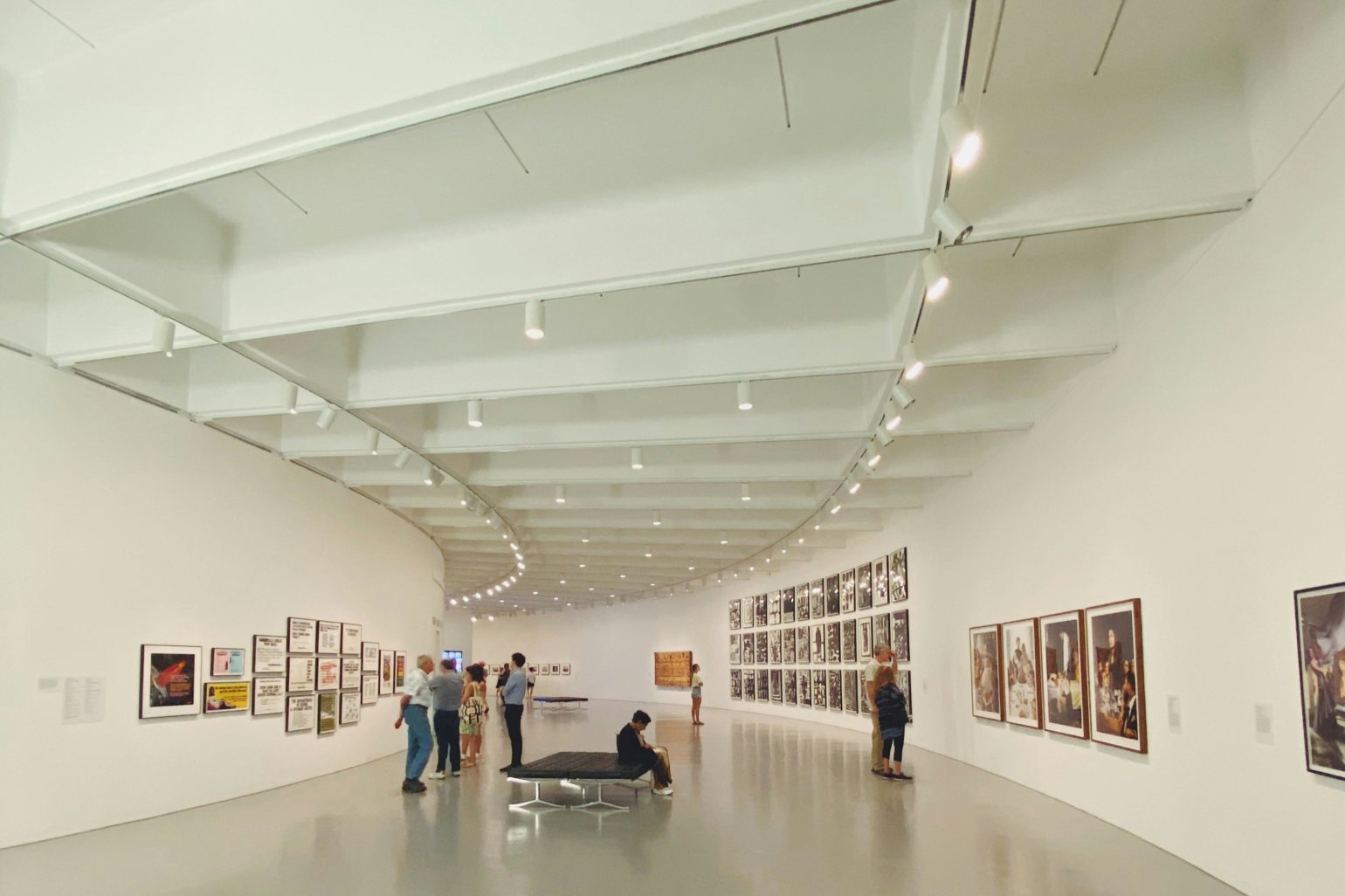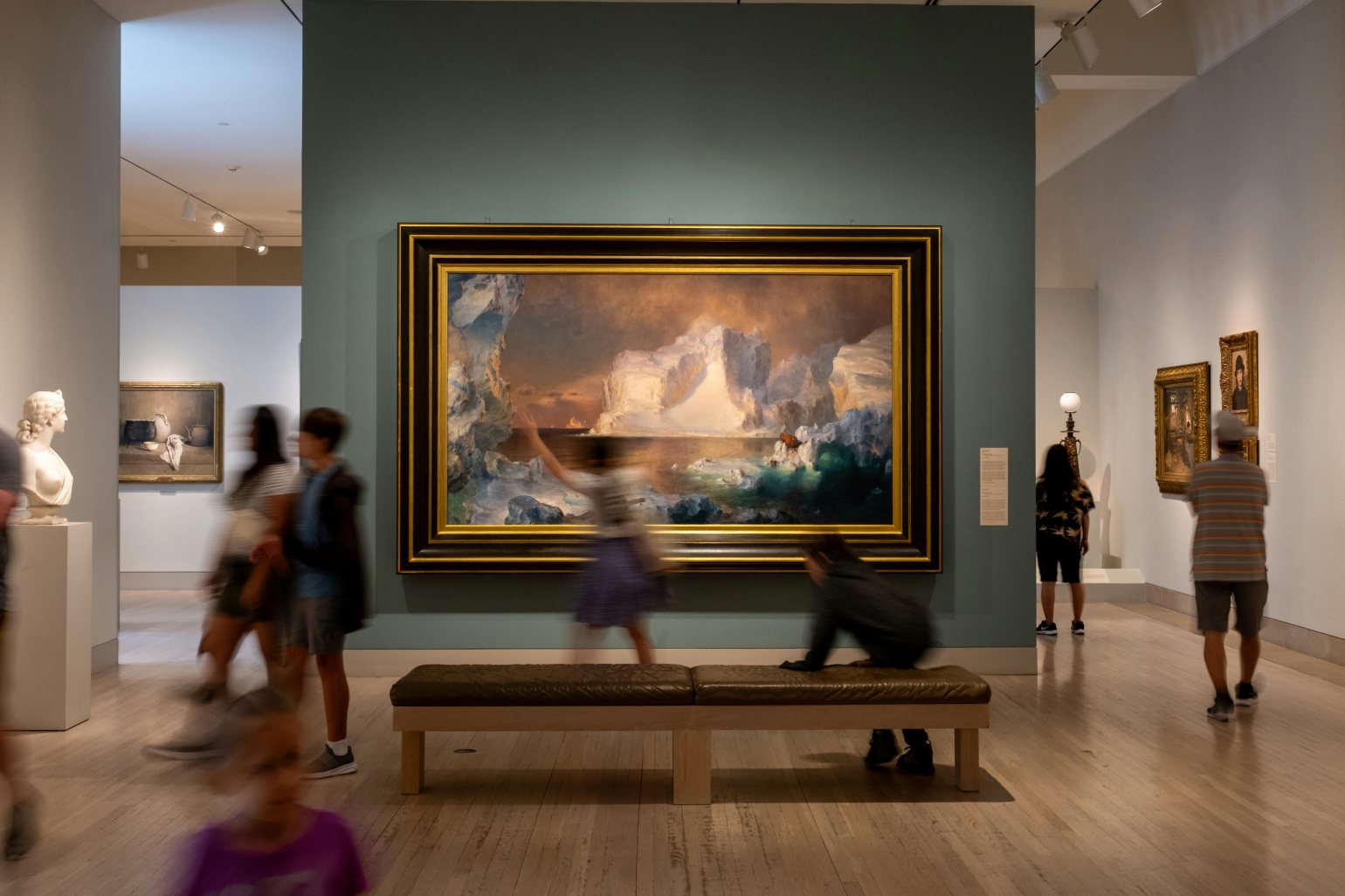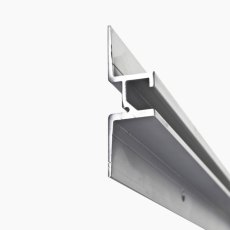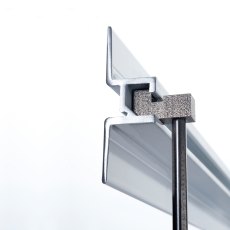Security in Museums and Art Galleries
![Mona Lisa painting on display in museum with large crowds Mona Lisa painting on display in museum with large crowds]()
Summary
Protecting artworks starts long before they’re displayed. This article explores how architects, designers and planners can build security into museum and gallery spaces from the ground up — from walls and hanging systems to barriers, lighting, cases and visitor circulation — ensuring collections remain safe while enhancing the visitor experience.
Between the years 2013 and 2023, the Metropolitan Police reported a total of 20 theft offences in Art Galleries and Museums in London, with the value of items stolen amounting to a little over £4million.
Relatively modest figures, perhaps, given the sheer number of galleries and visitors in London, but it’s important to note that the data doesn’t reflect, for example, attempted thefts, incidents resolved internally, or any cases that went unreported to police – so the rate of incidents is likely to be much higher.
Internationally, of course, there have been more high-profile cases in recent history. A Van Gogh painting was stolen during a break-in at the Singer Laren Museum in the Netherlands in 2020 – with the museum’s director, Jan Rudolph de Lorm, expressing his shock and anger at the loss of the now recovered masterpiece:
"It is terrible for us all because art exists to be seen and shared by us, the community, to enjoy to draw inspiration from and to draw comfort from, especially in these difficult times"
A decade previously, in Paris, five paintings were taken from the Musée d’Art Moderne, valued at over €100 million, involving a broken window and an unmonitored motion detector.
While instances of theft and security breaches might seem comparatively rare – when they do occur, it points to an opportunity for improvement in infrastructure and planning that all museums and galleries can learn from.
Improving security in galleries and museums is a top-to-bottom exercise which involves all stakeholders. Collections staff might manage the care of the objects themselves, but architects, designers and planners shape the conditions that allow collections to be displayed securely.
Indeed, security begins at the earliest stages: in the design of walls, the selection of art hanging systems, and the careful configuration of movement through a space.
![gallery architectural drawings and hanging track rails during planning meeting gallery architectural drawings and hanging track rails during planning meeting]()
Security begins at the design stage
Architectural decisions impact long-term protection
Physical security should be factored in from the outset of the building design process.
‘Buildings and perimeters offer the first line of defence against theft, fire and flood’, affirms the Arts Council England Security in Museums and Galleries guide. Materials such as brick, stone or reinforced concrete offer superior resistance to forced entry, while external openings, including doors, windows and rooflights, should be limited, and every remaining point of access must be strengthened.
Internally, layouts should allow clear separation between public and private spaces. Emergency exits, duct routes and structural voids should not become vulnerabilities. Avoiding unnecessary recesses and designing continuous sightlines helps reduce hidden zones, making it easier to monitor visitor movement and identify risks quickly.
Designing with security in mind early prevents the need for later retrofitting – a costly and often less effective solution. These choices also affect accreditation and loan eligibility further down the line, as we’ll find out later.
Hanging systems should be built into the architectural planFixings provide structural integrity and theft resistance
Naturally, the choice of gallery picture hanging system influences the aesthetics of displayed artworks, but it also goes a long way towards protecting valuable assets. A system that offers adjustability, strength, and anti-theft features allows curators to install confidently while ensuring the piece stays where intended.
The Ryman Hanger is trusted internationally by leading museums, galleries, and heritage sites. Its carefully engineered design allows for a near-flush mount and contains a concealed locking system which can only be disengaged with a specialised tool. The hanger also allows for small adjustments during installation, which reduces the need for multiple wall fixings and preserves the frame’s integrity.
For heavier or older frames with deep rebates, the Link Hanger is a hugely popular and robust solution; it bridges the gaps between wall and artwork and provides stable, discreet support. Chain Hangers, meanwhile, designed for period interiors, offer a reliable fix that aligns with traditional aesthetics.
Each system should be matched to the weight, frame, and wall surface involved. For maximum performance, the wall structure must be designed to accommodate the chosen fixings from the outset, although Ryman hangers can also be used with all our track systems, rather than attaching directly to the wall.
![Absolute surface mounted barriers in situ at Tate Britain, protecting a large artwork Absolute surface mounted barriers in situ at Tate Britain, protecting a large artwork]()
Barriers are essential for safe visitor interaction
Physical boundaries protect artworks and guide movement
Museum barriers form an important part of any physical security strategy, particularly in open gallery environments, keeping visitors at a safe distance from artworks while facilitating smooth crowd flow through the space.
Freestanding barriers provide plenty of flexibility and can be repositioned as required. This is especially valuable for temporary exhibitions or in response to visitor behaviour changes – if a specific work unexpectedly attracts increased footfall, for instance. Socketed or floor-fixed barriers, meanwhile, provide a more permanent solution, useful in high-value or high-traffic displays.
In short, subtle barrier design maintains the visual clarity of an exhibition while reinforcing spatial boundaries. Planning adequate circulation space around these areas ensures they can function without obstructing security sightlines or creating pinch points.
![Art gallery setting featuring track lighting in the curved ceiling Art gallery setting featuring track lighting in the curved ceiling]()
Lighting and surveillance must be coordinated
Visibility, conservation and monitoring are interconnected
Lighting design influences both how artworks are viewed and how well spaces are lit for invigilators and cameras. Inadequate lighting creates blind spots, while over-lighting can lead to glare or reflection, hindering both visibility and surveillance footage quality.
Track lighting systems allow curators to control light direction and intensity per artwork, which, crucially, must work in harmony with camera placement to avoid shadows or blocked angles. Consistent, balanced light improves monitoring and enhances visitor safety.
Security lighting should never compete with the conservation needs of the work. Many materials are sensitive to UV and heat. LED systems with high colour rendering and low output allow for effective lighting without compromising preservation.
Display cases and openings should resist forced accessStructural features must delay entry and deter interference
Doors, windows and rooflights remain the most frequent points of forced entry. According to Arts Council England guidelines, these should be constructed from materials capable of withstanding a determined attack for the time needed to trigger and respond to an alarm. That includes laminated glass, internal shutters and steel-framed doors with secure locking systems.
Display cases must also meet structural standards. Cases housing small, portable or high-value objects should be tamper-proof, lockable and alarmed where appropriate. All materials should be shatter-resistant and tested for forced entry scenarios.
The goal is to delay unauthorised access long enough for detection systems to activate and for staff or authorities to respond. These layers of protection – from perimeter to plinth – form the backbone of secure gallery environments.
![Large artwork and other pieces on display in a gallery with lots of people moving through the space Large artwork and other pieces on display in a gallery with lots of people moving through the space]()
Movement patterns influence both experience and security
Circulation design affects oversight and protection
Visitor movement through a space can either support or strain a gallery’s protective systems. Good exhibition planning considers how people naturally flow from one work to the next, where they gather, and how easily they can be supervised.
Spaces with clear sightlines allow for passive surveillance, in which invigilators can monitor large areas with minimal physical presence. Exhibitions should avoid crowding valuable works near exits, or placing small objects in alcoves where visibility is limited.
In cases where visitor response is unpredictable, such as viral popularity on social media, the ability to adapt quickly is crucial. Portable museum barriers, modular signage and mobile information stands allow staff to reconfigure protection without disrupting the exhibition or display wall integrity.
A gallery designed with movement in mind creates a more secure, more welcoming space – one that allows objects to be appreciated while keeping risk tightly controlled.
Accreditation and loans require physical security complianceFunding and borrowing are tied to protective standards
Importantly, to qualify for the Government Indemnity Scheme or receive significant loaned works from national collections, galleries must meet strict physical and electronic security requirements. These include perimeter protection, display fixture strength, alarm monitoring, and internal zoning.
Spaces that do not meet these criteria may be denied access to key exhibitions or support funding. Retrofitting older buildings to meet security thresholds is often expensive and technically difficult – especially when working within conservation limits.
Early collaboration between architects, planners and security consultants is essential. Together, they can ensure the building supports the security standard required without disrupting its aesthetic, historical or functional goals.
YOU MIGHT ALSO LIKE:
Immersive Art Vs Protected Artworks: Balancing Engagement with Preservation
Read ArticleDesign and security are inseparable in exhibition spaces
Each physical component plays a part in protecting the collection
Walls, art hanging systems, lighting, cases, barriers and layout all contribute to a secure environment for galleries and museums. When these elements are planned in unison, they allow curators to install artworks confidently and safely, knowing the space supports the display intent, essential security protocols, and, crucially, the overall visitor experience.
Absolute Products works with architects, designers and museum professionals across the UK and internationally to specify museum-grade hanging systems, barrier solutions and display accessories that meet both curatorial and security needs. If you're planning a new build or renovation and need expert input on how to protect the artworks that matter most, please do get in touch. We’re here to help.
-
Posted by Jade Turner
30th September 2025


